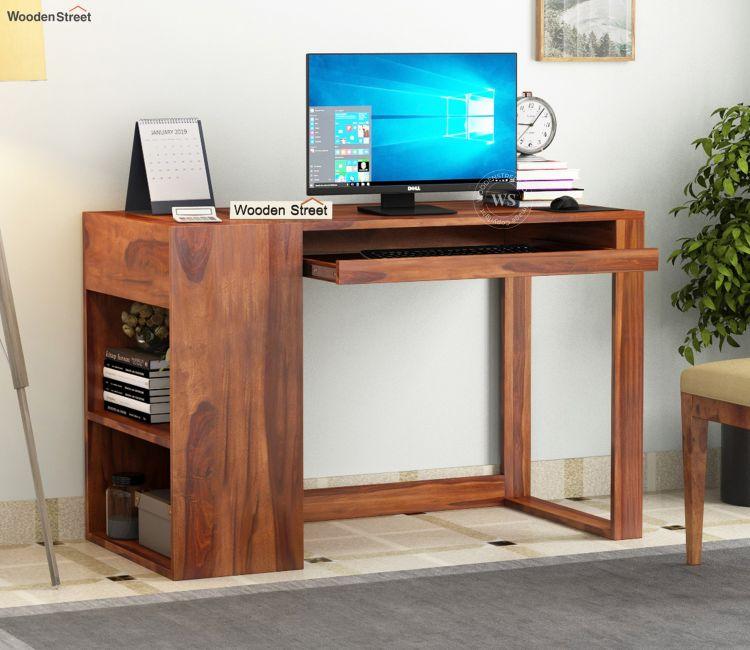A study table is more than just a piece of furniture—it’s the launchpad for ideas, creativity, and academic success. However, cluttered desks and poorly organized supplies can often hinder focus and productivity. If you're tired of the mess or simply want a smarter setup, you’re in the right place. This guide is packed with DIY study table organization hacks that will transform your workspace using minimal tools and maximum creativity.
Why Organizing Your Study Table Matters
Whether you're a student, remote learner, or someone working from home, your study table plays a crucial role in how well you focus. A clean, clutter-free table improves attention span, reduces distractions, and makes everyday study sessions smoother. The best part? You don’t need a complete overhaul—just a few smart changes can make a world of difference.
1. Use Vertical Space: Wall-Mounted Organizers
If your study table is in a compact room, using the wall above it is a game-changer. Install wall-mounted racks, floating shelves, or even a pegboard to store books, stationery, and small decor. This clears up space on the table surface while keeping essentials within reach.
Pro Tip: Pegboards can be customized with hooks, baskets, and holders—perfect for students who need versatile options.
2. Create DIY Drawer Dividers
Drawers can quickly turn into a mess of pens, papers, and random items. Use cardboard or foam boards to create custom dividers inside your study table drawers. Label each section for pens, markers, sticky notes, and cables.
Bonus Idea: Use washi tape or colored paper to make it look fun and visually organized—ideal for kids' study tables.
3. Use Mason Jars & Tins as Desk Holders
Upcycle mason jars, tin cans, or even coffee mugs as pen stands, scissor holders, and brush containers. Wrap them in jute rope, fabric, or paint them to match your room’s aesthetic. These are perfect for organizing your study table without spending money on new accessories.
4. Add Under-Table Storage Baskets
If your study table has space beneath, add slim rolling carts or storage baskets to hold less-used supplies like art kits, extra notebooks, or backup chargers. Use stackable plastic crates or zip bins to keep things tidy and easy to access.
5. DIY Cable Management Solutions
Messy wires can not only look unappealing but also become a tripping hazard. Use binder clips at the edge of your study table to hold charging cables. You can also attach adhesive hooks or buy inexpensive cord sleeves to manage wires neatly.
Upgrade Option: Install a small power strip under the study table to centralize gadget charging and avoid tangled wires on the tabletop.
6. Create a Mini Bulletin Board or Pinboard
Cut out a piece of corkboard or use a magnetic whiteboard to display your schedule, notes, reminders, or motivational quotes. Mount it above or next to your study table to keep your goals front and center.
It helps keep track of tasks while reducing sticky note clutter on the desk.
7. Add a Rolling Study Cart for Extra Supplies
If your study table isn’t large enough, a rolling cart can serve as an extension. Store art materials, tech accessories, or books in labeled bins. Roll it under the desk when not in use. This is especially useful for kids or students with multiple interests.
8. Create a “Focus Zone” With Study Table Zones
Divide your study table into functional zones—a gadget area, a writing space, and a supply corner. Use trays, mats, or small boxes to separate each zone visually and functionally. This helps maintain discipline and reduces distractions.
For example:
-
Left side: books and journals
-
Center: laptop or notebook
-
Right side: pen holder and lamp
9. Add Mood Lighting to Your Study Table
Lighting affects how focused you feel. Add an adjustable desk lamp or install strip LED lights along the edge of your study table for a warm, well-lit effect. Good lighting reduces eye strain and boosts nighttime productivity.
Smart Hack: Use rechargeable LED clip-on lights for flexible positioning and portability.
10. Label Everything (Seriously!)
From folders and trays to drawers and containers—labelling is an underrated organization hack. It eliminates guesswork, saves time, and helps you build the habit of putting things back where they belong.
Use printable labels, washi tape, or handwritten sticky notes based on your style.
Extra Hack: DIY Book Holder or Laptop Stand
Use a stack of sturdy cardboard or leftover wood to build a slanted laptop stand or a book holder for your study table. This enhances posture and clears up space for notes or writing underneath.
Study Table Organization for Kids
For kids’ rooms, incorporate color-coded bins and visual cue cards. Use fun shapes, stickers, and personalized desk accessories to make study time exciting. Encourage children to take part in organizing their study table regularly—it builds responsibility and keeps their creativity flowing.
When to Declutter Your Study Table
Make it a habit to tidy your desk weekly. Remove unnecessary items, old notes, broken pens, and things you no longer use. A five-minute weekly clean-up can save hours of searching and create a more inviting study environment.
Final Thoughts
Organizing your study table doesn’t require expensive tools or a professional designer. With these DIY hacks, anyone can turn a messy desk into a functional, inspiring workspace. Whether you’re prepping for exams, working on creative projects, or helping kids stay focused, a well-organized table makes all the difference.
A tidy study table isn’t just about aesthetics—it’s the foundation for better productivity, reduced stress, and smarter learning. Try one or more of these hacks and see how quickly your motivation improves!

